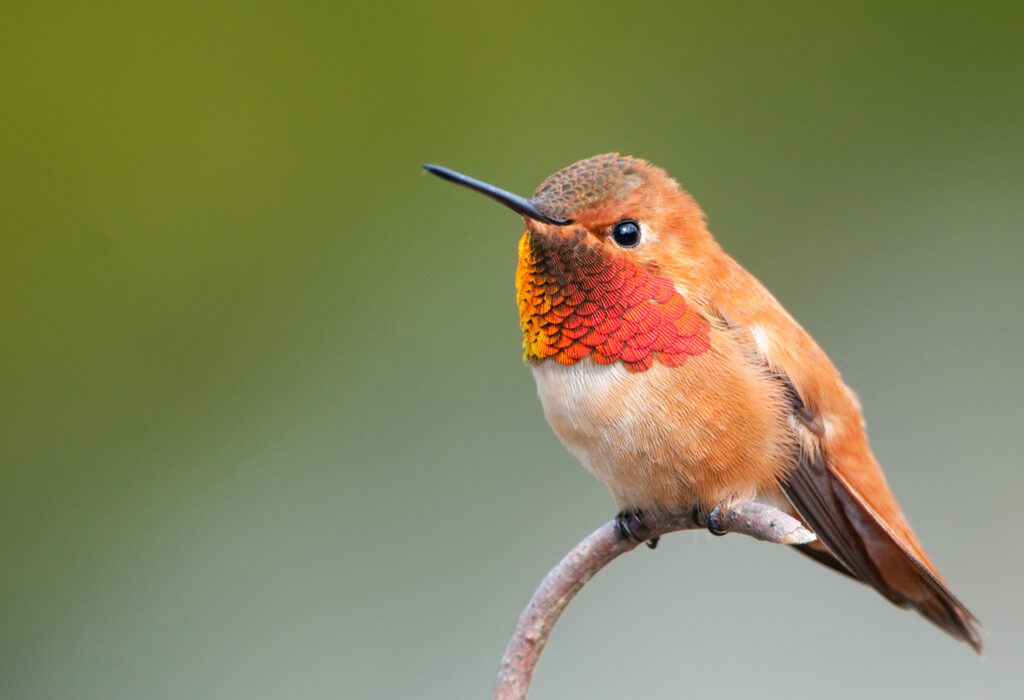
This is the face of a friend. Keep reading to learn about a hummingbird’s intelligence and how it can recognize human allies. iStock image of male rufous hummingbird
From the first fly-by in mid-March through the summer frenzy, we are fascinated by hummingbirds. Ever ask yourself: Aren’t hummers friendly? Sit back and relax and read some fantabulous information in support of this theory.
First, hummingbirds are extremely intelligent. You’ve heard about an elephant's memory? Well, a hummer could give an elephant a run for its money in a card game of concentration. A hummingbird’s brain is proportionately 4 percent of its body weight. In comparison, a human’s brain, on average, is 2 percent of their body weight. Hummers can not only remember every flower but also if the nectar was good and when to return once the flower has replenished its nectar.
On that note, in an interview in the aisle at H-E-B, Burnet County AgriLife Extension Agent Kelly Tarla pointed out: What do people plant around their houses? Flowers! What are in and around houses? People! With the awareness of pollinators in and around our communities, people are planting native flowering plants in their yards. Hummingbirds frequent the flowers and learn that people at that home are friendly.
Hummingbirds also remember where the feeders are. Have you ever had a hummingbird hover in your face and look you straight in the eye? This is often their way of communicating to you that the feeders are empty or soured and you should get to work fixing the situation.
Hummingbirds not only frequent feeders, they visit many flowers and supplement their diet with aphids, ants, gnats, and mosquitoes — a great reason to keep the feeders out. They consume 1½ to three times their body weight daily. (Hummers even saved Martelle’s ash tree. While trying to recover from the freeze, the ash was being devoured by aphids. Now, she knows why her tree is flourishing: Hummingbirds ate the aphids.)
Acrobatic would be an understated way to describe their flying abilities. They can fly forward and backward and even upside down. They do have feet and can walk, yet their walk is clumsy. But why walk when you can hover?
In conclusion, hummingbirds are friendly to you if you are friendly to them!
IDENTIFYING WEEDS
I don’t know about your garden, but in our gardens, it is hard to tell the difference between weeds and exotic plants.
Here is a simple test. First, go to your flowerbed or garden. Second, reach down with a pair of channel locks (big pliers) and lock onto the prospective plant. Last, give a big pull. If it comes out easily, you just removed a desirable plant. If you couldn’t pull it up, it was a weed. Just teasing!
FALL FRUITING PLANTS
American beautyberry, Bradford pear, Carolina buckthorn, cherry laurel, Chinese photinia, cotoneaster, Euonymus alata, flowering dogwood, hawthorns, Mexican plum, Nandina domestica, persimmon, pyracantha, rusty blackhaw viburnum, rough leaf dogwood, soapberry, Southern magnolia, Southern wax myrtle, sumac (smooth, flameleaf), sweet gum, and wax-leaf ligustrum.
Till next time. Keep your souls and soles in your garden!
Remember the True Master Gardener: Jesus said, “I am the vine; my Father is the Gardener.” John 15:1
"In the Garden" is written by father-daughter duo Bill and Martelle Luedecke and Bill Luedecke. Contact Martelle at 512-769-3179 or luedeckephotography@gmail.com. Contact Bill at 512-577-1463 or bill@texasland.net.













